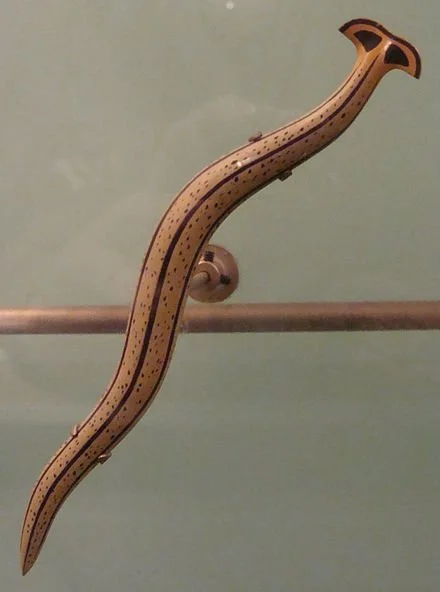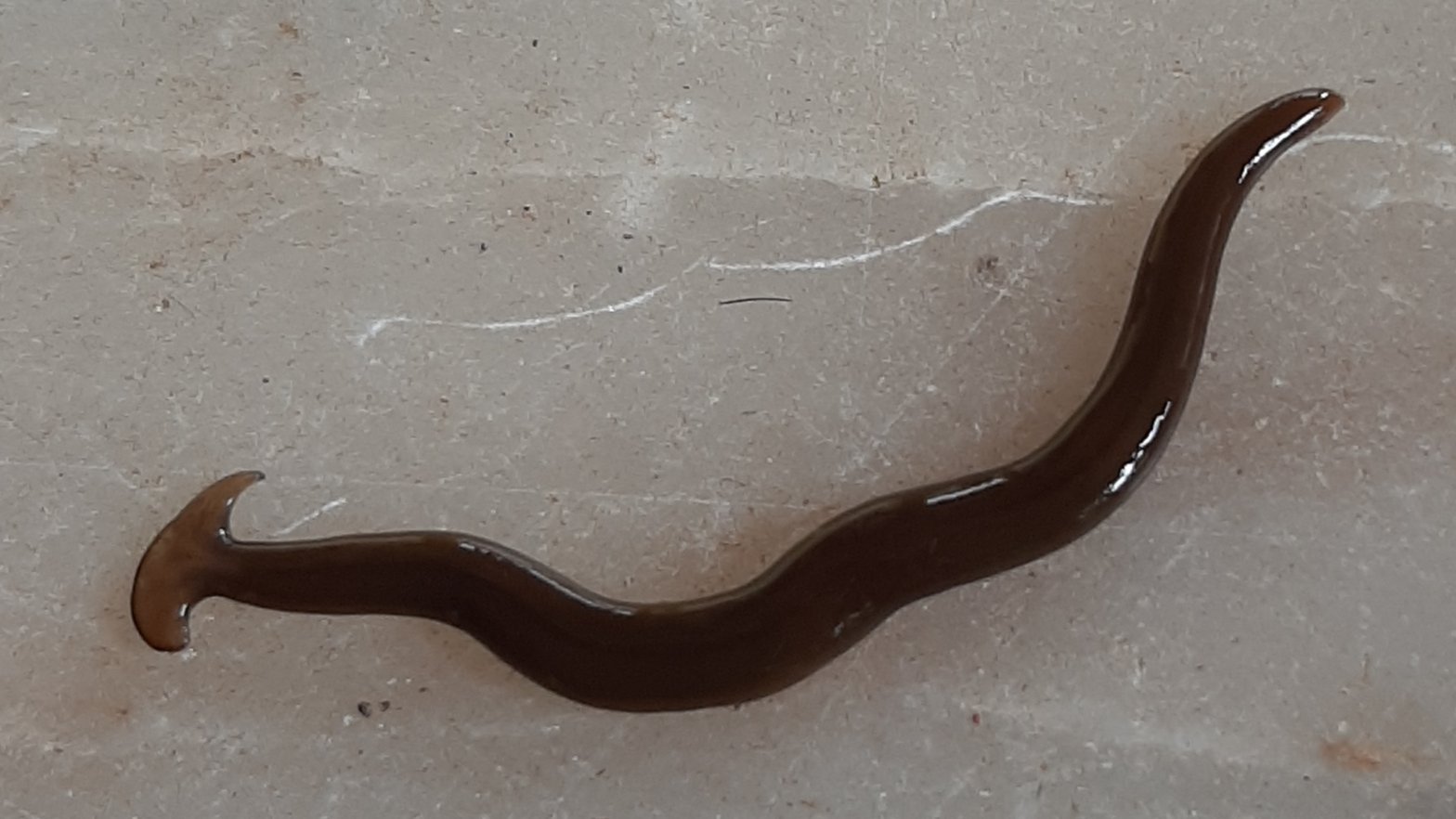
Cynthia Drummond: Global warming sends a toxic worm to southern New England
Model of a Hammerhead worm.
And a real one.
— Photo by SREEJITH VISWANATHAN
From ecoRI News (ecori.org)
HARRISVILLE, R.I.
Samantha Young was working in her father’s garden when she saw some strange-looking worms she hadn’t noticed before. What she had found were invasive hammerhead worms.
“The three Hammerhead Worms were all found in my dad’s yard on Round Top [Road] in Harrisville,” she wrote in an email. “I found them while cleaning up around the yard. They were all found underneath stuff like buckets, and rocks.”
Native to Asia and Madagascar, the Hammerhead Worm, or Bipalium Kewense, was transported to Europe and the United States in shipments of exotic plants. It has been in the United States since the early 1900s and is most commonly found in states such as Louisiana, where conditions are warm and humid. But now, as the climate warms, these invasive worms are spreading.
With their distinctive heads and long, flat bodies, hammerhead worms, which are members of a large family of flatworms, or planaria, are easy to identify. They are usually striped, and can grow in length to nearly a foot.
The biggest concern is the damage the carnivorous worms could do to agriculture, because they are predators of earthworms. While the glaciers killed almost all the native earthworms north of Pennsylvania, and most of the earthworm species in the United States were brought here by European settlers, earthworms are important for soil health.
The one thing you don’t want to do if you find a hammerhead worm is touch it, or let your pets, including backyard chickens, eat it.
Hammerhead Worms produce a neurotoxin, tetrodotoxin, which is also found in puffer fish, which are sometimes served in sushi restaurants as “fugu sashi,” where they are prepared by only the most highly skilled chefs.
Josef Görres, formerly of the University of Rhode Island, currently teaches soil science at the University of Vermont and is familiar with hammerhead worms.
“If you read some publications out of Texas, they’re kind of saying, ‘Hey you know, there are really big ones,’ of course, in Texas, they always have bigger things than anybody else, but they’re saying it may actually be a human health concern,” Görres said. “Most of that toxin is near the surface of the worm so you touch it or you play with it, or something like that, it might cause you harm.”
As if toxins weren’t enough, Hammerhead Worms can also transmit harmful parasites to humans and animals. And they have another unpleasant characteristic: they regenerate from segments if they are cut up, so chopping them into pieces will only make more.
Görres said these invasive worms weren’t considered a threat until they began to expand their range.
“On first introduction, there probably weren’t many of them and so now, as they’re spreading, they’re becoming more obvious to people,” he said. “I, certainly, over the last five years, have seen a lot more than even 10 years ago.”
Young said she had to research the three worms she found to identify them.
“I didn’t know what they were until I googled it,” she said. “I left them in a Tupperware container until they died.”
If people can’t handle the worms without protection and they can’t cut them up, what is the most efficient way to kill them? Görres recommends salting, bagging and freezing.
“I read somewhere that in order to kill them, you put them in a bag, you put salt in there and then you freeze them for 48 hours,” he said. “Double overkill. The salt will desiccate them and then freezing them, if anything is left, freezing them will also kill them — 48 hours at minus 20 degrees Celsius, which is what the freezer is at, usually.”
Since they are not perceived as a threat to agricultural crops, Hammerhead Worm research is not well-funded. Concern has instead focused on another invasive species from Asia, the Snake Worm, which devours the surface material or “duff” of the forest floor.
“They consume the forest floor, the duff layer and … by the time all that duff layer is gone, there’s a lot fewer plants in the understory of the forest,” Görres said.
The ecological damage caused by Hammerhead Worms, he said, is minor by comparison, at least so far.
“I am not really 100 percent concerned about them,” he said. “It’s just something I keep on my radar, because they’ve been reported in the Northeast now for a few years and I keep finding them in various places, woodlands as well as gardens.”
Görres also noted dry summers, which are becoming increasingly common in New England, might limit the spread of Hammerhead Worms, which need humidity to thrive.
“Things are getting dryer here,” he said. “They might just be confined to wetlands and areas where people irrigate.”
Cynthia Drummond is an ecoRI News contributor.
In exurban Harrisville, R.I.
—Photo by User:Magicpiano
‘Strange ancient memories’
Harrisville, N.H. in 1905
— From H.P. Lovecraft (1890-1937), writer and a Providence native who’s known for his horror and science-fiction stories.
What we got
In the New Hampshire mill village of Harrisville.
"New Englanders gave us codfish and quahogs and atomic submarines. They gave us the America's Cup races and Waltham watches, town meetings and mill towns, village greens and fall colors.''
-- From New England, by Ted Smart and David Gibson





